Students inspired by Shanxi history, culture
Shanxi is a perfect combination of the old and new, and its traditional elements can inspire modern creativity. That was what students from Malaysia felt during their 12-day study tour of the North China province.
Thirty-three students from PIA, a vocational school in Malaysia's Perak region, together with their teachers, visited Shanxi from July 1-12 to learn about its history and culture, the modern creative industry and the latest developments in the vocational education industry.
The trip is a part of a Sino-Malaysian youth exchange and training program.
During July 3-10, the students toured Shanxi's famed places of historical interest, including the ancient city of Pingyao, the Xuankong Temple – or the Hanging Temple – in Hunyuan county, Sakyamuni Pagoda – or Wooden Pagoda – in Yingxian county and the Great Wall fortress of Yanmen Pass in Daixian county, as well as two of China's oldest Buddhist temples – Foguang and Nanchan in Wutai county.
Keen interest
As most of the students are Malaysian-Chinese, they have a keen interest in Chinese history and culture, and other aspects relating to their ancestral roots.
Mok Hao Han is a student with an interest in ancient Chinese architecture. He said his knowledge about China's ancient architecture is from his grandmother.
"My grandma was a teacher of Chinese history," Mok said.
"When I was a kid, she told me that China boasts some of the greatest ancient buildings in the world. What she said aroused my curiosity in this country where she was from and now my dream has come true because of this trip to Shanxi."
When viewing the ancient buildings, Mok said the aesthetics of the structures can inspire him as a student of artistic design.
"I've paid special attention to the linear characteristics of the buildings' roofs, as well as their colors," he said. "I believe these are the things I can learn from for my designs."
Wong Xin Yi, a student of graphic design at PIA, shares the same interests with Mok. She said she is a follower of Lin Huiyin, a renowned Chinese researcher in ancient Chinese architecture and an artistic designer.
"I was informed that Lin and her husband Liang Sicheng, who was also a famed architecture researcher, discovered quite a few ancient buildings in Shanxi," Wong said. "This time, I'd like to follow in their footsteps to find out what and where they are."
She said she was lucky that Foguang Temple, one of the oldest Buddhist temples discovered and identified by Lin and Liang, was in her itinerary.
At the temple, the tour guide told her that this is the second-oldest preserved wooden-structure building in China, next only to the Nanchan Buddhist Temple, which is also located in the county of Wutai and which they would visit later.
According to inscriptions found in the temple, the Grand Eastern Hall, the main hall of Foguang, was built in 857 during the Tang Dynasty (618-907) and has been preserved to this date. It has a history that rivals the Nanchan Temple, which has a main hall built in 782.
Historic discovery
She was also told the story about the discovery of the building, which was hidden in a remote village more than eight decades ago.
If not for a discovery by Liang and Lin in the 1930s, its historical and cultural value may still be unknown.
Before the 1930s, many researchers, especially those in Japan, believed that there were no preserved wooden structures older than the Tang Dynasty in China.
When examining the photos of murals in Gansu province's Mogao Grottoes, the couple found there was a set of maps of temples in the Mount Wutai region and Foguang was one of them.
In early 1937, they launched a search for the temple and it was quickly found in June.
Their research proved that the Grand Eastern Hall is the largest among the few preserved Tang Dynasty structures in China.
Wong said she was also impressed with the scale and the cultural values of this temple.
"This is a treasure house of Buddhist arts with a large number of statues and great murals, and also a trove for the study of ancient architecture as it features Tang Dynasty architectural style and structural details," Wong said.
At Foguang Temple, some students like Mok and Wong discovered a unique feature of the Tang Dynasty building. The huge roof has its eaves extending several meters out of the walls.
Classical woodwork
They learned what makes this extension possible is the unique ancient Chinese structuring component called dougong.
A dougong is a set of interlocking wooden bow-shaped brackets. Its function is to provide increased support for the weight of the horizontal beams that span the vertical beams or pillars.
Later, at Taiyuan Tourism College, the students had the opportunity to learn how to make dougong brackets themselves and how these ancient structural components can be used in modern creations.
"Dougong is among the most innovative structural components in ancient China," Mok said. "It is a great invention in terms of technique and aesthetics."
Chin Wei Chong is a student of multimedia-aided design at PIA. He said he is happy to see that designers can be inspired by ancient things when designing modern, creative products.
He noticed that schools in Shanxi are trying to transfer ancient things like dougong into a local version of Lego bricks.
Chin said the most amazing thing in Shanxi is that the traditional cultural assets, like buildings, paintings, calligraphy and folk arts, can inspire people in the cultural creative industry.
"I've heard that a lot of Shanxi designers have won international awards for the innovative use of traditional elements in their works," Chin said.
"When it comes to creativity, a designer should not start from scratch," he said. "He can draw inspiration from many other things. In Shanxi, for instance, the traditional culture is the source of inspiration for many designers."
Ong Zi Eng, another PIA student, said that building a linkage between traditional culture and modern creativity is the wisdom that Shanxi contributes to the design industry.
"We are Malaysians with ancestral and cultural roots in China," Ong said. "We'd like to bring home these Chinese cultural elements, which would be conducive to our career development in the future."
Latest developments
During the trip, PIA students were also amazed with Shanxi's rapid development empowered by new technologies, especially in the design and creative industries.
In Shanxi, they attended several seminars and workshops at local vocational schools, focusing on such topics as the use of artificial intelligence in design and the utilization of digital technologies in inheriting and developing traditional arts.
"In Malaysia, AI is in its nascent stage and we don't have much experience in applying it in the design industry," said PIA student Haisvianee Krishnan. "In Shanxi, we were amazed with the scenarios where AI is applied."
"It is used in almost every industry: in modern design, in the protection of cultural heritage and in manufacturing and many others," she added.
Chin Choong Kooi was a PIA teacher taking part in this Shanxi trip. He said the deepest impression of this trip is that he saw the connection between traditional assets and modern technologies. "This is especially the case in the vocational education sector, which is a focus of our study," he said.
"We felt the difference in vocational education and career development between Malaysia and Shanxi," said Lim Chow Ding, another PIA teacher. "This difference will not hold us apart. Instead, we see the difference as an opportunity to broaden our vision."
This year marks the 50th anniversary of diplomatic ties between China and Malaysia. Over the decades, the two countries have witnessed steady and prosperous cooperation in many fields, said Lee Chuen Loong, the president of PIA who headed the delegation to Shanxi.
Lee said education is an important sector for bilateral collaboration. Vocational training has gained strong momentum for growth since the launch of the Malaysia-China International Industry and Education Cooperation Center.
He added that under this new initiative, nearly 1,000 Malaysian students have come to China for vocational training.
"The Shanxi tour is also one of the latest moves under this program," Lee said.
The journey covered such Shanxi local schools as Taiyuan Tourism College, Shanxi Vocational University of Engineering Science and Technology, and Jinzhong Vocational & Technical College.
"My deepest impression of this trip is that many vocational schools in Shanxi have devoted much energy to turning traditional cultural assets into modern creative arts," Lee said. "This is a regional characteristic you seldom see elsewhere."
He added that the practice in Shanxi's vocational education sector is a typical case worth studying. "We are considering further cooperation in exchange of such an experience," he said.
The collaboration has entered the implementation stage after PIA signed a framework agreement for cooperation with Taiyuan Tourism College on July 5.
In addition to exchanges, the two schools will launch joint teaching programs in the future, according to Xie Yuhui, president of Taiyuan Tourism College.
Hao Hong contributed to this story.

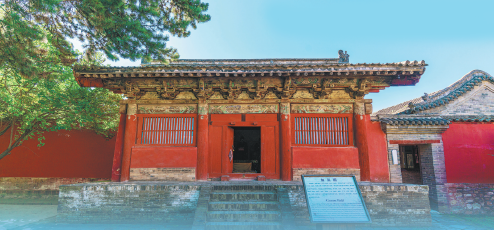
A well-preserved ancient building at Foguang Temple in Shanxi province. Provided to CHINA DAILY
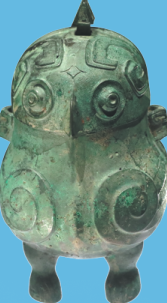
The flank of a Shang Dynasty (c. 16th century-11th century BC) bronze wine vessel called Xiaoyou, which is dubbed the ancient version of an Angry Bird and is collected at Shanxi Museum. Provided to CHINA DAILY
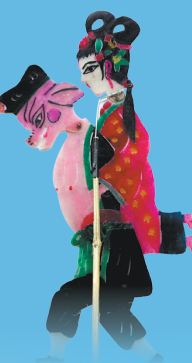
A shadow puppet play in Shanxi province depicts a scene from Journey to the West. Provided to CHINA DAILY
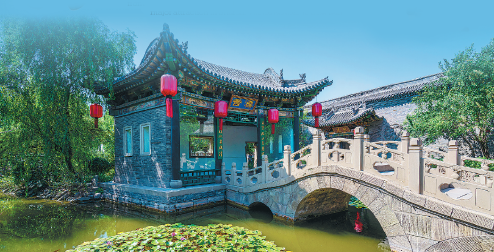
The Qiao Family Compound is a major attraction in Shanxi. Provided to CHINA DAILY
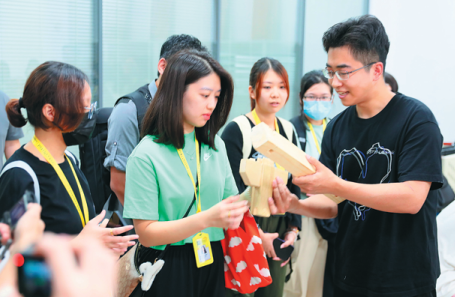
Malaysian visitors learn about carpentry practice at Shanxi Vocational University of Engineering Science and Technology, a stop of the Malaysian students' tour of Shanxi. LIU YUFEI/FOR CHINA DAILY
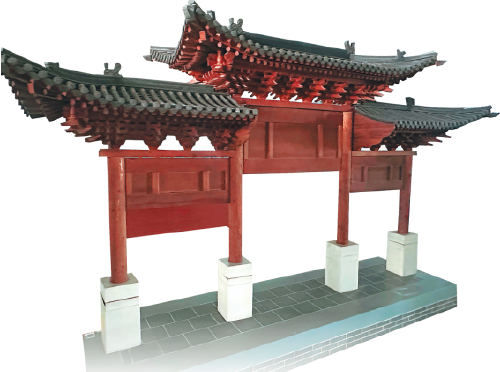
A replica of an ancient structure pailou displayed at the school. Provided to CHINA DAILY
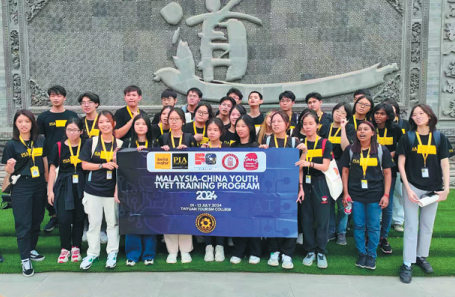
Tour members from Malaysia pose for a photo at a Shanxi museum, which focuses on brick-carving art. HAO HONG/FOR CHINA DAILY



